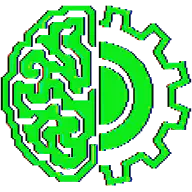SaaSxF#
The Nature of Creativity and the Problem of Boredom#
- [00:00:25] The video explores what makes something creative, linking the concept to engineering ideas of degrees of freedom and constraints.
- [00:01:50] A potential problem arises when one becomes “too smart” or finds everything too easy, leading to boredom and creative plateaus. This happens when the “average world” no longer presents sufficient challenges.
- [00:02:20] The proposed solution is to learn to create your own games or introduce self-imposed constraints when effortless situations become boring.
Overcoming Creative Plateaus: Strategies#
- [00:03:45] To shake off creative rust, two initial steps are suggested: [00:04:15] Be rigorous with your current tasks, looking for hidden complexities or missed observations. [00:04:35] Engage in metacognition – thinking about why you are thinking in a certain way – to clarify context.
- [00:05:15] The core strategy when boredom sets in is to start introducing random, interesting constraints.
Examples of Introducing Constraints#
The speaker provides personal examples of how he introduces constraints to spark creativity:
- [00:05:40] Basic fabrication and DIY projects using readily available materials (stationery, discarded items like dog leashes). [00:06:40] Modeling energy concepts (elastic potential energy) using common sources like springs from ballpoint pens or different types of rubber bands. [00:07:35] Building structures (e.g., tetrahedrons) using unexpected materials like new pencils and erasers for joints. [00:08:45] Using tools like a kitchen scale to test the structural integrity of these improvised creations.
- [00:09:45] Engineering systems like pendulums and introducing “organized randomness” (e.g., secondary pendulums) or computationally simulating them with resource constraints.
- [00:15:05] Cloud watching with specific, defined objectives (constraints). [00:16:10] Examples include looking only for animal shapes, specific letters/numbers, collinear clouds, or trying to predict the weather for the next few hours based solely on observation. Defining a task sharpens focus and makes observation a creative problem-solving exercise.
Constraints vs. Freedom#
- [00:10:50] The feeling of creativity often comes from the idea of constraints.
- [00:11:00] While we often chase various forms of freedom (temporal, financial, intellectual), we actively avoid constraints.
- [00:11:50] The speaker finds that engineering interesting constraints or reframing existing ones makes problems more incentivizing and induces creativity more effectively than having complete freedom.
Redefining Relaxation#
- [00:13:35] The speaker contrasts the conventional view of relaxation (doing less) with his own: true relaxation comes from doing something without focusing on the results, incentives, or perceived worth of the action.
Conclusion: Embrace Constraints#
- [00:17:00] The main point is that constraints are not inherently bad and can be powerful tools for creativity.
- [00:17:15] When bored, instead of seeking more freedom, try engineering your own constraints or making the problem harder.
- [00:17:40] This constrained thinking surprisingly leads to more interesting solutions and insights that can be applied to other problems.
- [00:18:00] The speaker mentions his other platform, thebitmaze.com, for philosophical discussions on computer science.
